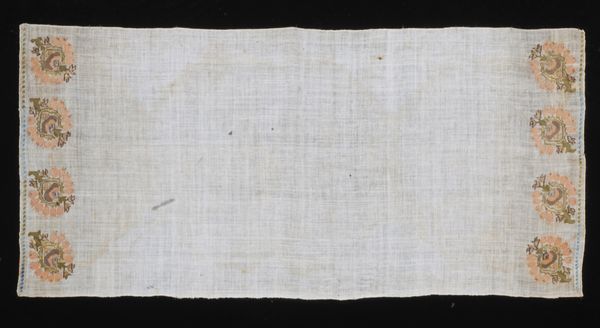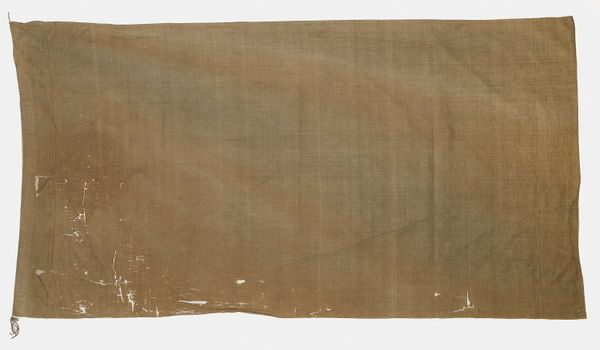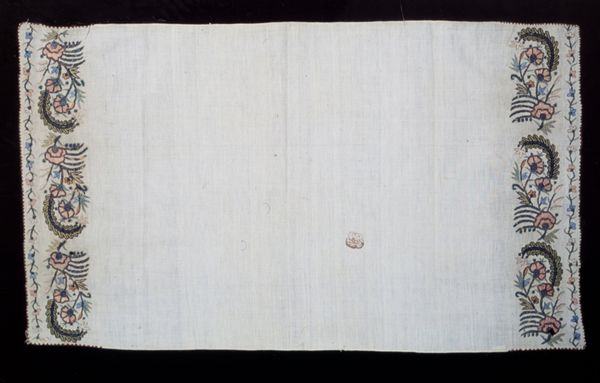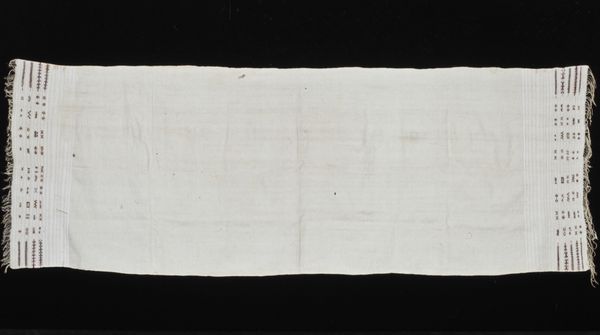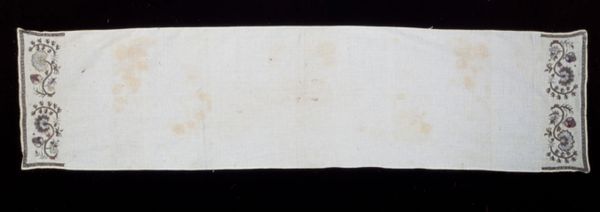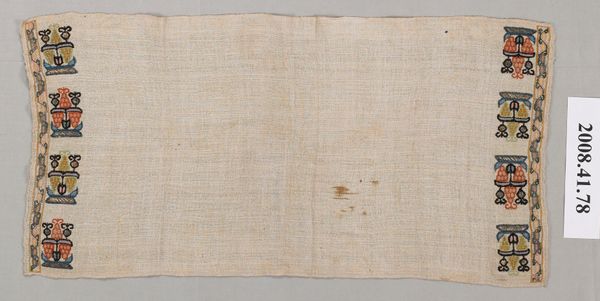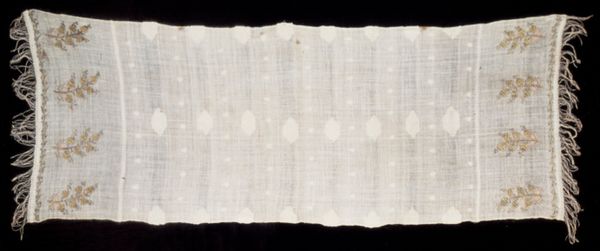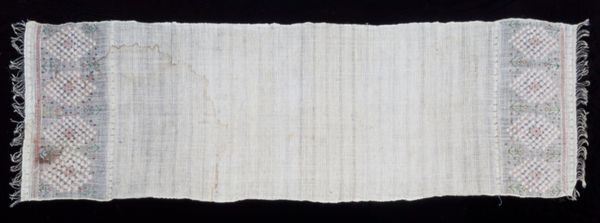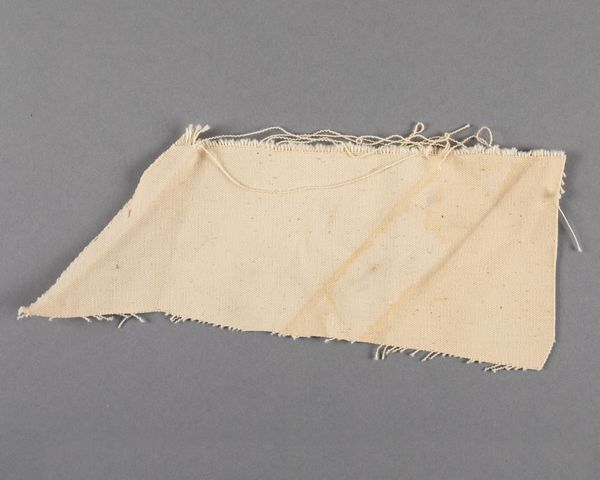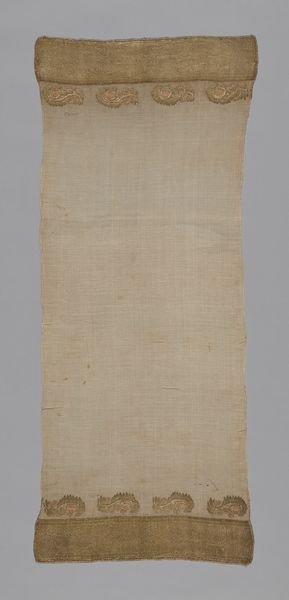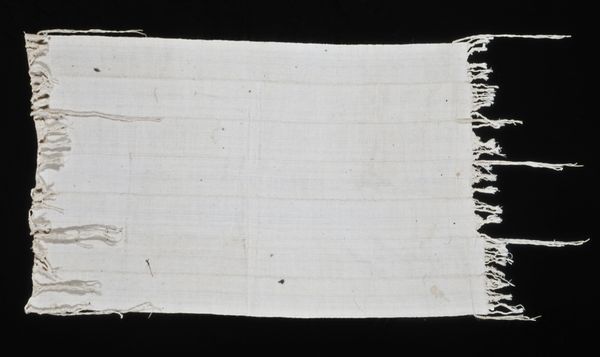
fibre-art, textile
#
fibre-art
#
textile
#
geometric
#
decorative-art
Dimensions: 35 x 7 3/8 in. (88.9 x 18.73 cm) (without tassels)
Copyright: Public Domain
Editor: Here we have "Sash," a cotton textile from the 20th century. I am really drawn to the bright colors at each end, contrasting with the plain, central white fabric. How do you interpret this work? Curator: Well, beyond the surface-level beauty, I see a compelling conversation between utility and aesthetics. Consider the history of textiles – particularly for marginalized communities. They often function as both practical items and potent carriers of cultural narratives. The decorative ends, rich with color and pattern, suggest a celebration of craft passed down through generations. How might we view this within the context of, say, feminist art history and the Pattern and Decoration movement? Editor: That’s interesting. So, the 'sash' form… is it literally something to be worn, or is there more to it? Curator: Exactly! Think about the act of adorning the body, especially in communities where sartorial expression might be a form of resistance or cultural preservation. Is the act of creation and embellishment of functional objects a claim of agency, even a subtle act of defiance? The geometric patterns and vibrant hues can be seen as encoding specific stories or histories, legible to those within the culture. Editor: I never considered clothing or accessories as carrying so much meaning. It makes me wonder what stories it holds. Curator: Precisely! And perhaps that's the power of this piece, encouraging us to look beyond the aesthetic and ask: Whose story is woven into these threads? How does this object participate in broader dialogues about identity, craft, and cultural expression? Editor: Thank you! This changed how I see this “Sash.” I need to study the history of textiles now. Curator: Indeed! Keep in mind the intersections of art, identity, and the narratives embedded within everyday objects.
Comments
No comments
Be the first to comment and join the conversation on the ultimate creative platform.
